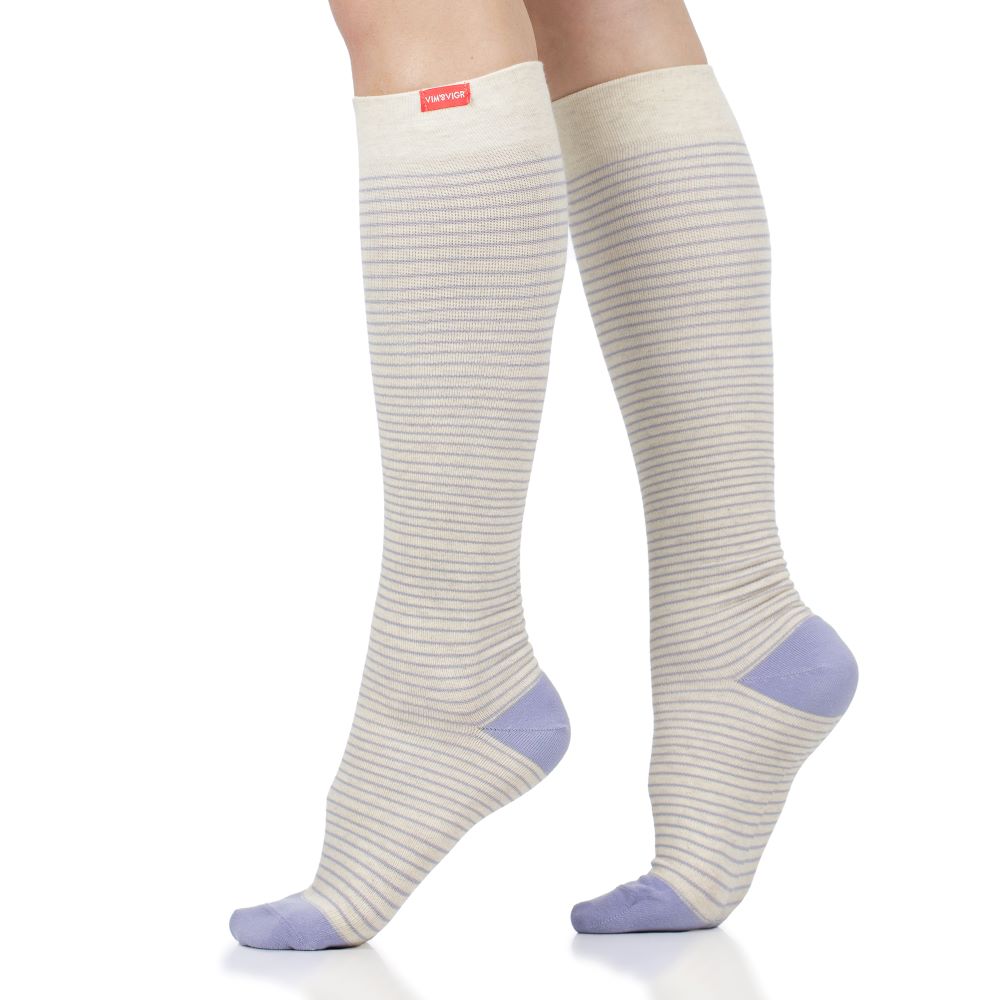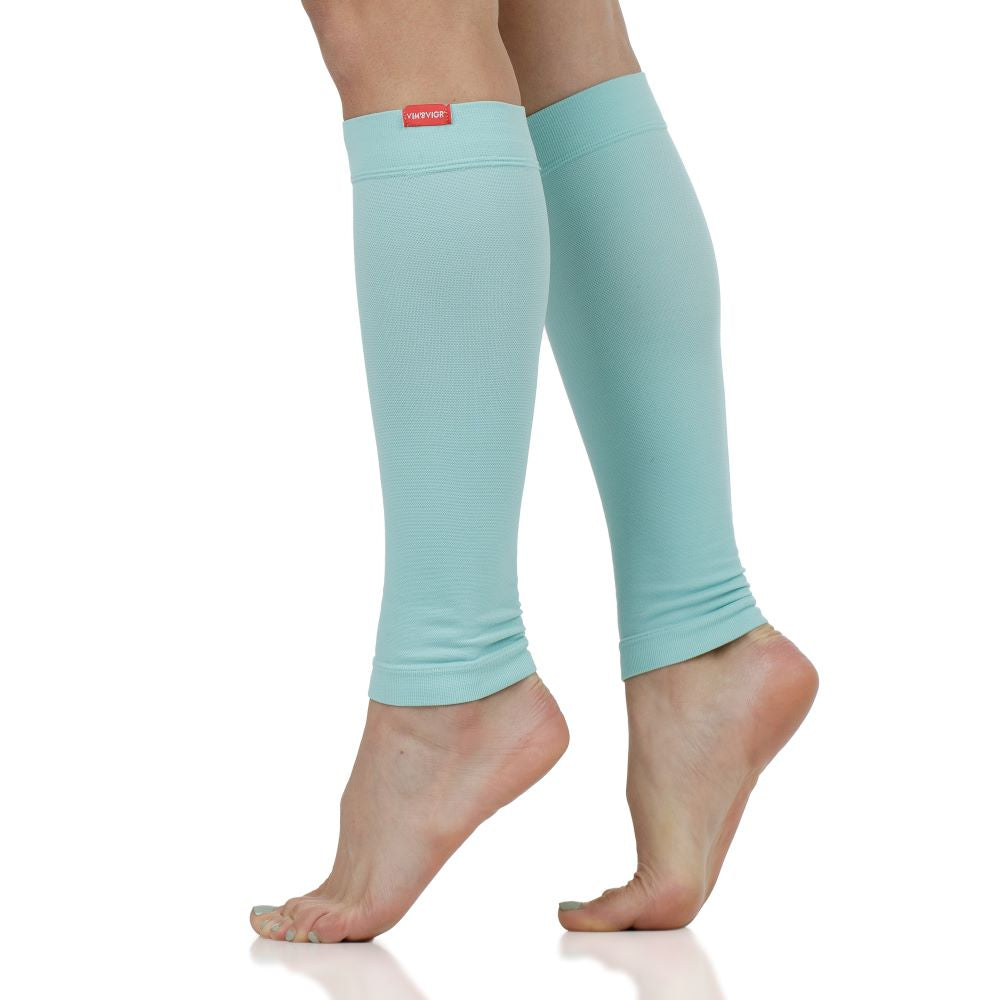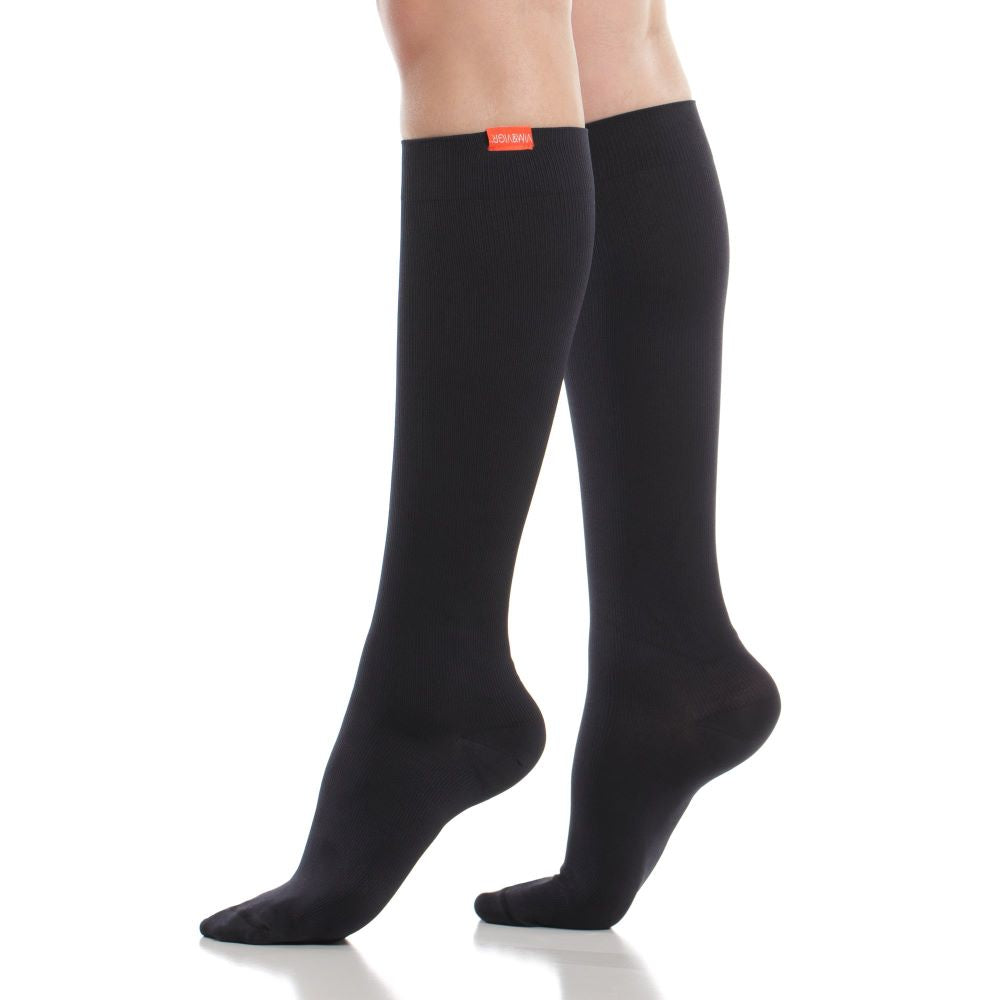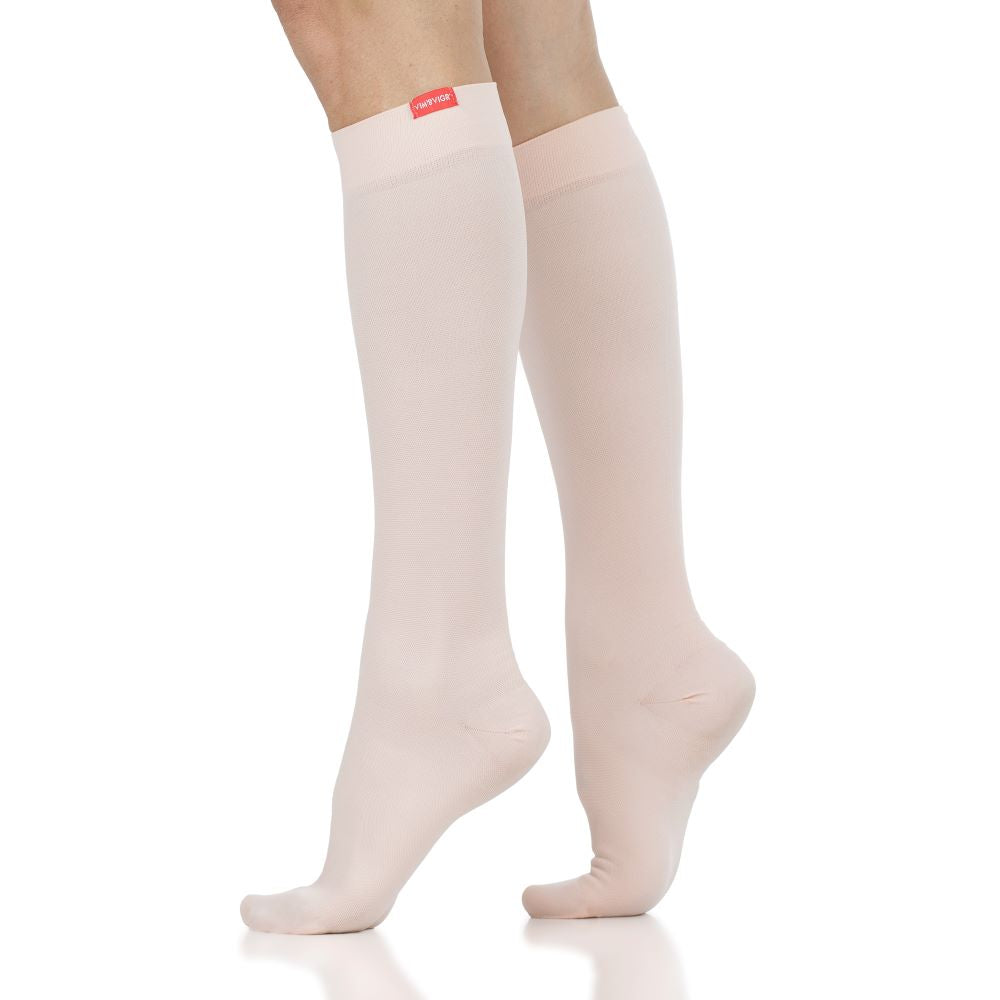Why Compression Socks are Important Backpacking Gear
Rachel is our marketing manager at VIM & VIGR and handles all things digital. When she's not at her desk, you'll find her camping in the mountains, running local trails or playing at the beach with her pup.

Above: Wearing my merino wool compression socks after a long day of hiking.
Last summer, I went camping at Mount Rainier National Park. If you're not familiar, it's a West Coast gem that features everything from wildflower-covered meadows to dozens of glaciers to beautiful old-growth forest. I was absolutely enchanted and immediately began searching for ways to get back. It wasn't long before Google surfaced an adventure called the Wonderland Trail.
Benefits of Compression Socks for Outdoor Adventures
Compression socks are a powerful tool for recovery. True graduated compression gives your legs a gentle squeeze – tightest at the ankle and gradually less tight moving up the calf. Not only does this feel amazing on tired legs, but it also helps force blood from your lower legs back to your heart, flushing out lactic acid and increasing the tissue recovery rate.
Oftentimes, when talking about compression socks we cover the scientifically-proven benefits of graduated compression, but there are also a myriad of felt benefits. For example, my friend was dealing with a nagging Achilles pain from running. She loved the supportive feel of compression socks around her ankles and found that they helped reduce her discomfort. When my ankles feel achy or unstable after turning them on rough trails, I reach for my compression socks to help stabilize my overstretched muscles and provide a feeling of tightness on wobbly tendons. Others have told us they use compression socks for calf cramps or shin splints.
On a backpacking trip, you can never be sure what you'll encounter. But you can be sure that your muscles will be tired, and chances are that you'll need warm socks as well. So I ask: why wouldn't you pack a pair of compression socks?!
Check out my favorite compression socks for backpacking!

The Wonderland Trail is a 93-mile thru-hike that circumnavigates Mount Rainier. With around 46,000 ft of cumulative elevation gain and loss, it's not a walk in the park. You can do it in anywhere from three to fourteen days, but most land somewhere around ten or eleven. It's highly permitted, so you have to plan well in advance (especially now – with COVID, walk-up permits have been discontinued).
But let me assure you, it is well worth the planning and the effort. This hike over-delivers on every front – from breathtaking views to fantastic campsites to challenging trail.
A few weeks ago I set off with two of my close friends with full packs and eager legs. We planned to do the trail in nine days and had our permit for eight nights worth of back-country camping. I'll spare you the play-by-play, but suffice to say that it was every bit the trip we'd hoped for (and more!).

Living my dream aka hiking all day for nine days straight
How I Used Compression Socks for Backpacking
As I relied on a backpack's worth of stuff for nine days, I really honed in on what was truly essential for my relative comfort and health on a multi-day trip. I was somewhat surprised (shh, don't tell my boss) that VIM & VIGR compression socks made it onto the short list along with my trusty Jetboil stove and favorite Saucony trail runners.
I should have expected that compression socks would be among my favorite backpacking gear – they've been favored by runners as a recovery tool for years. In fact, when I was training for my first ultra marathon last year, I used VIM & VIGR compression socks frequently to speed up my recovery between long runs.
The first night, after an exhausting 14 miles of hiking with a heavy pack, I slipped on my compression socks before zipping into my sleeping bag for the night. Couldn't hurt to give my tired legs a boost, I thought. In the morning, I was delighted to find I could still walk (!!) and that my calves, though tight, had recovered from the previous day's pounding.
From then on, I wore the socks to bed every night of the trip to maximize my recovery while sleeping. My friend, Emma, did the same. (She also swears by the socks for long runs & has loved them for the feeling of ankle support). Amazingly, the soreness in our legs did not accumulate throughout the trip, but rather, our legs adjusted to the demands of the trail.

Best Compression Socks for Backpacking
Merino wool compression socks proved perfect for the trail. Merino wool is well-known within outdoor apparel for a reason. It holds warmth even when wet, is temperature-regulating and helps neutralize odors (I cannot over-stress how important this is for backpacking!). Plus, they only weigh a few ounces and take very little space in a pack.



















Hi Kristel,
Many people love them for hiking as well — especially in colder weather!
-Rachel
Great post and that trail looks amazing! Do they make a difference to wear while hiking or just after?
Leave a comment